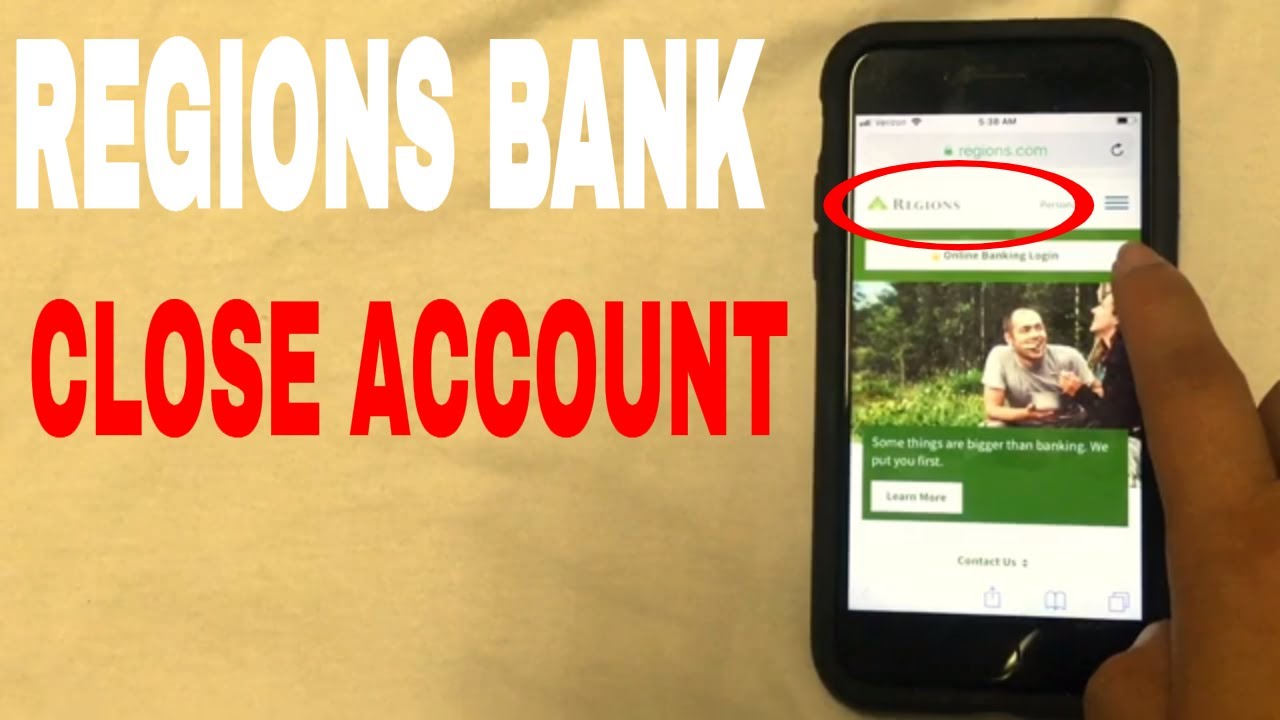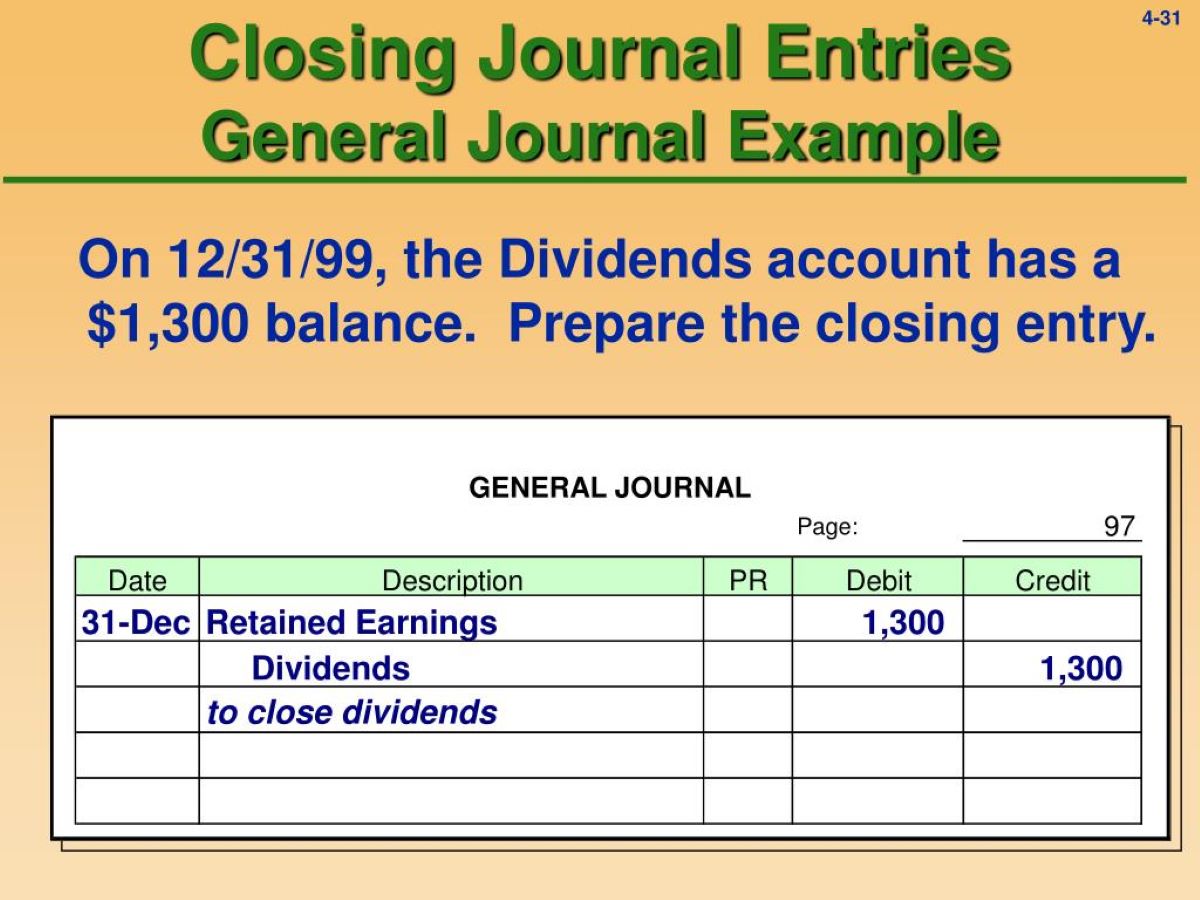

Finance
How To Close A Chase Savings Account
Modified: December 30, 2023
Learn how to close your Chase savings account and manage your finances effectively. Discover step-by-step instructions and expert tips on closing your account hassle-free.
(Many of the links in this article redirect to a specific reviewed product. Your purchase of these products through affiliate links helps to generate commission for LiveWell, at no extra cost. Learn more)
Table of Contents
Introduction
Closing a Chase savings account may be necessary for a variety of reasons. Perhaps you’ve found a better savings account with higher interest rates or better customer service elsewhere. Or maybe you no longer need a savings account and want to consolidate your finances. Regardless of the reason, knowing the steps to close your Chase savings account can help simplify the process and ensure a smooth transition.
Chase Bank, a subsidiary of JPMorgan Chase & Co., is one of the largest financial institutions in the United States. It offers a wide range of banking services, including savings accounts, which are designed to help individuals save money for short- and long-term goals. However, circumstances change, and you may decide it’s time to part ways with your Chase savings account.
In this article, we will guide you through the steps to close a Chase savings account, from gathering necessary information to confirming the closure. By following these steps, you can effectively and efficiently close your account while minimizing any potential issues or complications.
Step 1: Gather necessary information
Before initiating the closure process for your Chase savings account, it’s important to gather all the necessary information to ensure a smooth transition. By having this information readily available, you can easily provide it when requested and avoid any delays in closing your account.
The specific information you will need may vary depending on your account and situation, but here are some common details that you should have on hand:
- Account number: Locate your Chase savings account number, which can typically be found on your account statements or online banking portal.
- Personal identification: Prepare your driver’s license or passport, as well as your social security number. These identification documents may be required to verify your identity when closing the account.
- Account balance: Take note of the current balance in your savings account. This information is crucial to ensure that you transfer or withdraw the funds before closing the account.
- Outstanding transactions: Review any pending transactions or scheduled payments linked to your savings account. It’s important to address these transactions before closing the account to avoid any disruptions or penalties.
By gathering all this information ahead of time, you’ll be better prepared to navigate the account closure process smoothly. It will also help streamline your communication with customer service representatives, as they may require these details to assist you effectively.
Keep in mind that closing your Chase savings account may have tax implications or affect other financial arrangements. If you have any concerns about how closing your account may impact your financial situation, it’s advisable to consult a financial advisor or tax professional for guidance.
Step 2: Transfer remaining funds
Before you can close your Chase savings account, you need to ensure that there are no remaining funds in the account. Transferring the balance to another account is a straightforward process that can be done through various methods.
Here are some options for transferring your funds:
- Internal transfer: If you have another Chase account, such as a checking account, you can easily transfer the funds from your savings account to your other account. This can be done through Chase’s online banking platform or by contacting customer service.
- External transfer: If you have a savings or checking account with another bank, you can initiate an external transfer to move the funds from your Chase savings account to the new account. You will need the routing number and account number for the receiving bank to complete this transfer.
- Withdrawal: If you prefer to receive the funds in cash or a cashier’s check, you can visit a Chase branch and make a withdrawal. Be sure to bring proper identification, such as a driver’s license or passport, for verification purposes.
It’s important to transfer or withdraw all funds from your Chase savings account before proceeding with the closure. Leaving even a small amount can result in penalties or fees, and it may prolong the closure process.
If you have recurring payments or direct deposits linked to your Chase savings account, be sure to update the account information with the respective payees to avoid any disruptions in your financial transactions.
Once you have successfully transferred or withdrawn the remaining funds, you can proceed to the next step of closing your Chase savings account.
Step 3: Contact customer service
After transferring the remaining funds from your Chase savings account, it’s time to get in touch with Chase customer service to initiate the closure process. While some banks may offer the option to close an account online, Chase requires customers to contact customer service directly for account closure.
Here’s how you can reach Chase customer service:
- Phone: Call the Chase customer service hotline at [insert phone number] to speak with a representative. Make sure to have your account information readily available, as the representative may ask for it to verify your identity.
- In-person: If you prefer a face-to-face interaction, you can also visit a local Chase branch and speak with a customer service representative in person. Check the Chase website for branch locations and business hours in your area.
Once connected with a Chase representative, explain that you wish to close your savings account and provide any required information they may request. This may include your account number, personal identification, and other details previously gathered in Step 1.
It’s important to note that the exact process and requirements for closing a Chase savings account may vary depending on your specific circumstances. The customer service representative will guide you through the necessary steps and may provide additional instructions or documentation, if needed.
During this conversation, it’s also a good opportunity to ask any questions you may have about the closure process or any potential fees or penalties associated with closing your account.
By contacting customer service, you ensure that you have followed the proper protocol for closing your Chase savings account, and you can receive any necessary guidance or assistance along the way.
Step 4: Complete the closure request form
Once you have contacted Chase customer service and expressed your desire to close your savings account, they may provide you with a closure request form to complete. This form is an essential part of the account closure process and helps ensure that all necessary information is recorded accurately.
Here’s what you need to know about completing the closure request form:
- Personal information: The form will likely require you to provide personal details such as your name, address, date of birth, and social security number. This information is necessary to verify your identity and initiate the closure process.
- Account details: You’ll need to include your Chase savings account number and the current balance of the account. This ensures that the correct account is being closed and that any remaining funds are accounted for.
- Reason for closure: Some closure request forms may ask for the reason you are closing your account. While providing a reason is optional, it can be helpful feedback for the bank to improve their services or address any concerns you may have.
Ensure that you carefully review the closure request form before submitting it. Double-check that all the information provided is accurate and up to date.
Depending on how you contacted customer service in Step 3, the closure request form may be emailed to you to fill out electronically or provided to you in person at a Chase branch. If you receive the form electronically, make sure to promptly complete and submit it following the provided instructions.
By completing the closure request form, you are formally informing Chase of your intent to close your savings account and providing them with the necessary information to proceed with the closure process.
Once you’ve submitted the closure request form, it’s time to move on to the final step of confirming the closure and reviewing any remaining account details.
Step 5: Confirm closure and review account details
After submitting the closure request form, it’s essential to confirm that your Chase savings account has been successfully closed. This final step ensures that all loose ends are tied up and that you have a clear understanding of the account closure.
Here’s what you need to do to confirm closure and review account details:
- Confirmation notification: After submitting the closure request form, you should receive a confirmation notification from Chase. This notification may come in the form of an email, letter, or secure message through your online banking portal. Review this confirmation carefully to ensure that it states your account has been closed.
- Account statements: Monitor your Chase account statements in the following months to ensure there are no further transactions or fees associated with the closed savings account. If you notice any unauthorized activity, contact Chase customer service immediately.
- Documentation: Keep a copy of the closure confirmation notification and any other correspondence from Chase regarding the closure of your savings account. This documentation serves as proof that you have successfully closed the account and can be useful for future reference.
It’s crucial to review your account details to confirm the closure and ensure that no further action is needed. Following these steps will give you peace of mind and help ensure a smooth account closure process.
It’s worth noting that even after closing your Chase savings account, certain information may be retained by the bank for legal and regulatory purposes. However, your account will no longer be active, and you can rest assured that you have successfully closed your Chase savings account.
By following all the necessary steps and confirming the closure of your Chase savings account, you can confidently move forward and explore other banking options that better suit your financial needs.
Conclusion
Closing your Chase savings account is a straightforward process that requires careful planning and execution. By following the steps outlined in this guide, you can successfully close your account and transition to new banking arrangements. Remember to gather all necessary information, transfer remaining funds, contact customer service, complete the closure request form, and confirm the closure and review account details.
Throughout the process, it’s essential to communicate with Chase customer service representatives, ask any questions you may have, and address any concerns or issues that arise. They are there to assist you and ensure a smooth closure experience.
Keep in mind that closing your Chase savings account may have financial implications, so it’s advisable to consult with a financial advisor or tax professional to understand any potential tax consequences or impact on your overall financial situation.
Remember to maintain documentation of the closure process for your records, including any confirmation notifications and relevant paperwork. This will provide you with proof of the account closure and help address any future inquiries or discrepancies.
Now that you have a comprehensive understanding of how to close a Chase savings account, you can confidently proceed with the necessary steps and explore other banking options that align better with your current financial goals and preferences.
Always strive to make informed decisions when it comes to managing your finances, and don’t hesitate to reach out to the appropriate professionals for guidance throughout the process. By taking these steps, you can ensure a smooth transition and set yourself up for financial success.














